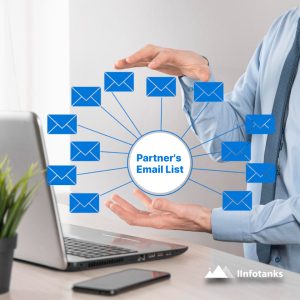How to Maintain a Clean Email List
Maintaining clean email marketing lists is an integral part of your email marketing strategy. In B2B, the email marketing database decay rate can go up to 70% annually. Factors like email bounce and unsubscribe increase your churn rate. Your company may witness a revenue loss without a clear strategy to add more subscribers. Email providers like Gmail have become more aware of what their users want and don’t want to see in their inboxes. There are filters to identify spam and save a user from viewing an email from senders having a low reputation. Even your email service provider (ESP) keeps track of everything. It checks whatever goes through their servers – the kind of engagement a specific sender is getting on their campaign.
There are many benefits to maintaining clean email marketing lists. Regular cleaning of your email marketing list increases the engagement rates of your marketing campaigns. It helps in keeping the bounce rates to a minimum. On the other hand, failing to maintain a clean email marketing list can create problems. Your email campaigns may face a higher bounce rate, more unsubscribes, spam complaints -which reduces sender reputation. These factors can make a harmful impact on your subscribers’ inbox, such as reduced email deliverability rate and unsuccessful email campaigns.
How does a clean email list help you?
Regularly cleaning your email marketing lists can increase your email marketing campaigns’ engagement rates, enabling companies to create deeper relationships with your subscribers. Building highly targeted email marketing lists of contacts helps you focus more on the subscribers interested in your product or service. You can create content that meets their needs and expectations. Increase conversion rates and have a highly engaged subscriber community, contributing to increased revenue and happy customers. Clean email marketing lists can also help you reduce bounces from bad email addresses. Lower bounce rates on your email campaign increase your sender’s reputation as it signals to the internet service provider (ISP) that you are committed to respecting your recipient’s inbox and are not sending them spam emails. Hence, there’s an increased email deliverability rate for your entire subscriber list.
What are the risks of not cleaning your email marketing lists?
Some companies don’t clean their email marketing lists because they think there is no additional cost to send an email to one more person, which is not correct. Email for marketing strategy using a dirty email list costs you nearly a fortune. Bad email marketing lists decrease your sender reputation from email bounces and spam complaints. Over a while, this damage piles up and can negatively affect your ability to reach the inbox of your entire subscriber list, including your best and most engaged customers. Email sending software such as SendGrid, MailChimp, and others require you to maintain your domain reputation by sending relevant email mailing campaigns. Getting your email marketing lists cleansed through email marketing companies such as Infotanks Media can save the additional cost of acquiring new contacts. It can help you generate revenue through clean data for an email campaign.
How to identify if you have a clean email list?
Many marketers focus their resources and efforts on getting as many contacts as possible to sign up for their mailing list. Logically, this makes some sense as you are trying to reach as many contacts as possible. But, in reality, it is not a good idea as you think only about the email list growth. After utilizing additional efforts and resources, you wouldn’t want to have a subscriber list filled with people having no interest in your product, service, or solution. It proves that your efforts are wasted and even damaging your domain reputation. Send mailing campaigns to contacts who are highly interested in your product, service, or solution for more conversion. To ensure you send mailing campaigns only to interested people who genuinely want to receive your emails, keep a close eye on the following metrics:
Complaint rates: Higher unsubscribes and spam complaints indicate that your subscribers are not happy with your emails and most probably are not interested in what you are offering.
Engagement rates: If you are getting consistently low open and click-through rates on your email marketing campaigns, it’s an indication that you have outdated contacts on your email list.
Email Deliverability: Poor email deliverability could result from a bad email list. It can lead to low engagement rates that decrease your domain reputation.
If you encounter any issue with the metrics, as mentioned earlier, you should implement an email list cleaning service to weed out subscribers based on their interest and engagement. Apart from adding new subscribers to the list, put effort into cleaning your email list. There are some straightforward yet effective strategies to clean an email list and maintain its health – here’s what you can do.
Deep clean your email marketing lists.
If you have an email for marketing strategy in your company, the chances are that you have a few outdated contacts on your email list. To reach subscribers who engage with your email and maintain high deliverability, you must deep clean your email list to make it up-to-date. Follow these steps:
Age your list: If you are getting high bounces or spam complaints, then you should consider aging your email list by the sign-up date. You can easily do this by exporting a .csv file format. Shortlist by sign-up date chronologically to determine whether the oldest subscribers on your email list are disengaged.
Use a Permission Reminder: It appears as a small reminder message at the top or bottom of each email describing why the recipient is receiving your emails and how they can unsubscribe from your mailing list. This small reminder can decrease your spam complaints. Ensure only interested subscribers are receiving your emails.
Remove role-based emails: Role-based email addresses are, for example, “sales@example.com” or “director@example.net.” Create a campaign to reach out to these subscribers to find out if you can replace these email addresses with a specific name that can be your point of contact. It will help you reduce the bounce rate for future campaigns.
Segment subscriber based on past engagements:
Not every one of your subscribers is going to engage with the same email campaign strategy. To ensure your email list stays clean, you must personalize your email mailing campaigns to each segment based on preferences. Your email service provider (ESP) lets you view information about the subscribers opening emails and clicking on the links. You can also see the subscribers who are not showing any engagement. There can be several data uses to build strong relationships with your subscribers. The best way is to segment your entire subscriber list by engagement – one segment for rewarding your actively engaged subscribers and another segment to dig deeper into inactive subscribers showing no engagement.
Active subscribers: They are those subscribers who regularly open your email then engage with the information inside your email. Segmenting these subscribers will enable you to
Leverage their influence to bring interested people to your website or add them to your subscriber list by creating a referral email campaign
Reward them with exclusive offers, discounts, exclusive content, giveaways, etc
Acquire feedback for your content and other aspects of your email to determine if they have suggestions for improvement.
Inactive subscribers: These are those subscribers who rarely open your emails and rarely engage by clicking a link or a call to action (CTA). Until they become a lost cause, you can still send emails to
Acquire feedback on their experience and why they are not engaging with your emails to understand how you can engage with them
Experiment with new and out of the box email marketing strategies on this segment of subscribers to win them back
Revive your stale email marketing lists
If your email list has aged and decayed over time, then the best solution is to create an engaging opt-in email campaign that can act as a CTA. Ensure that your email should make it very clear that the non-responding subscriber is not on the mailing list. Even though it may seem counterintuitive to remove subscribers to grow your email list, the greater goal is cleaning your email list. Add only interested subscribers who like your content and are very likely to engage by responding to your CTAs. It will improve the email deliverability rate, ensuring more subscribers receive your emails. It will decrease your bounce rate by verifying and validating the contacts. You can further win over them confidently by nurturing them with relevant content.
Create a re-engagement strategy
Low engagements don’t always mean that your subscriber is not interested in your product or service. The content you have been sending them could be irrelevant. But, before you create an email campaign for your subscribers that don’t usually open your emails or click your CTA, figure out what kind of content could be more appealing to them. You can engage them using offers, like;
Exclusive content
Limited period discount or a gift
A special reward
Maybe your subscribers like your content but are facing email fatigue. Email fatigue is more common during the holidays when the inboxes get filled at a much faster rate than usual. Create a strategy to re-engage with subscribers on other channels or through email campaigns but after a while. You can also include your social media links in your email to connect with subscribers who prefer to interact through social media channels or a different channel other than email. Further, you can offer your subscribers an easy way to pause email communications for a specified period and start to receive your emails again after a short interval of time.
Remove hard bounces and consistent soft bounces.
Sending emails to subscribers who cannot receive email on their email address is one of the worst email marketers’ situations. When an email fails to get delivered to the recipient’s email address, it is called a “bounce.” Bounce can result from several reasons and are of two different types: “hard bounce” and “soft bounce.”
Hard bounce: It happens when an email is not delivered to the recipient’s email address as the email address is not valid. It could result from a simple typo, or it could mean that the recipient’s email address no longer exists. Remove all email addresses that result in a hard bounce to avoid them on your future email marketing campaigns.
Soft bounce: It occurs when an email doesn’t get delivered to the recipient’s email address due to a temporary issue. It could be a result of a server issue or just a full inbox. If you are getting several soft bounces for a specific email address, it may be a good idea to remove them from your subscriber list.
Ask relevant questions
If you are getting lower engagement rates from your subscribers, it isn’t easy to know why. It could be that your subscribers don’t care about receiving your emails, or they like your emails but are not motivated or compelled enough to take any further action. The easiest way to segment these subscribers is by asking them questions. You can kick start your email engagements rates by the following;
Ask your subscribers to vote in your poll.
Acquire their opinions on something you are about to do or have done
Ask your subscribers to set their email communication preferences (like frequency of emails, exciting topics, etc.)
Ask questions within the unsubscribe option to know if they would prefer different content topics or a different frequency.
When your engagement rates start to increase, further weed out subscribers that are not engaging with your emails.
Easy unsubscribe option
It is a harsh reality that many marketers still think that giving an easy unsubscribe option to their subscribers will dampen their effort. But it would help if you kept in mind a few things. First of all, provide value to your subscriber and plan your actions accordingly. Even if you make the unsubscribe process complex, time-consuming, or even hide the unsubscribe link, you can’t make them stay. They can mark your email as spam, which will do you more harm than letting them unsubscribe. When a subscriber marks you as spam, it is a negative signal that will affect your email deliverability. Your domain reputation gets affected even for future subscribers and campaigns.
Clean up your email copy to avoid spam filters:
Reviving your sender reputation and email integrity is not straightforward once you are a spammer. To steer clear of this problem, you need to follow the guidelines and best practices. For instance, using words like free, buy, lowest price, etc., should be avoided as they trigger the spam filter. And even if you want to use these terms in your email, include+ them in graphics like images or GIFs. But be careful while using graphics as large graphics and attachments are also critical triggers for the spam filter.
But, what is a spam filter?
A spam filter is a program by internet service providers (ISPs) created against spammers. This program uses different criteria to filter out an unwanted and unsolicited bulk email to prevent such emails from reaching their recipient’s email address.
Use double opt-in to add quality subscribers.
Double opt-in is a great way to add subscribers to your email list who want to receive emails from you. With the help of automation, you can send them a confirmation email to confirm their subscription. So, apart from getting their correct email address, you can verify typos or inactive email addresses. It helps in maintaining the hygiene of your email list. Double opt-in also helps with regulations in various countries. A double opt-in process ensures that you are only adding quality subscribers to your email list interested in receiving an email from you. At the same time, it helps to be general data protection regulation (GDPR) compliant.
There are many benefits of using a double opt-in, like:
Decreased hard bounce: When you use a double opt-in method, you can stop subscribers from subscribing using a fake email address or the email address that doesn’t belong to them.
Increased engagement rates: Using a double opt-in method, you won’t get subscribers who are half-heartedly interested in being on your subscriber list. Even though you will get fewer subscribers, you will get quality subscribers.
Increased email deliverability: In a double opt-in method, when a subscriber submits your sign-up form, they expect to receive a confirmation email from you. Even if the confirmation email ends up in their spam folder, they will be able to find it and then move it to their inbox. It will increase the deliverability rates of your future marketing email campaign.
Hire a list cleaning service:
Email list cleaning is also known as email scrubbing, is a great way to maintain your email marketing lists’ hygiene. Using list cleaning service is a prevalent practice among marketers. It is a must-do technique for those who lack the time, resources, or expertise. Some marketers believe that list cleaning services don’t do a good job; this belief is more common among email service providers (ESP). We can’t speak for other list cleaning providers, but 2000+ clients trust Infotanks Media for list cleaning services. Contact Infotanks Media, the best among email marketing companies, to know more about how we can help you with your stale list and any other B2B data or marketing services.













Write A Comment